It All Started When...
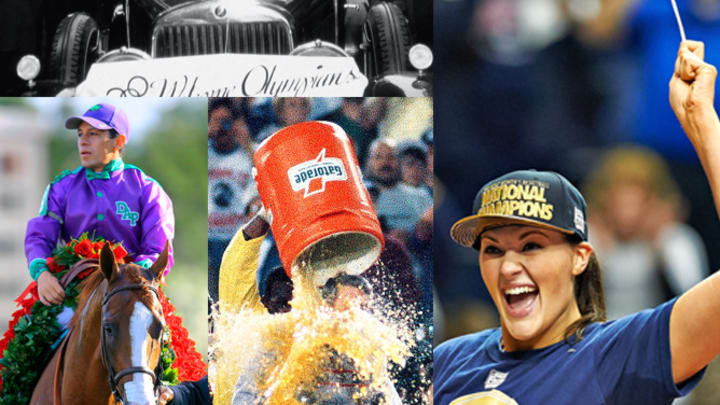

These iconic traditions seem like they've always been a part of sports in America. But how did they really begin?
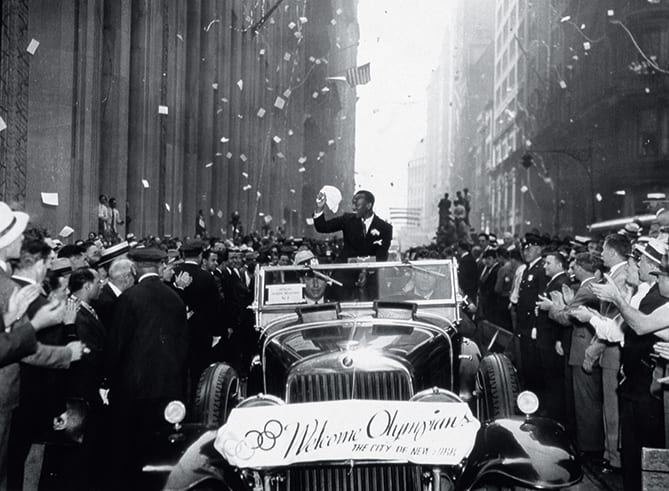
Back in the 1880s, people in office buildings on Wall Street in New York City spontaneously threw ticker tape — used in stock ticker machines, which printed out financial information gathered from telegraph lines — out of their windows during celebrations. Soon, it became a thing. During political parades and rallies, ticker tape came pouring out of windows in downtown New York. So many parades wound their way through lower Manhattan that the area became known as the Canyon of Heroes. The 1924 U.S. Olympic team enjoyed the first sports-related parade, and over the years, individuals such as scientist Albert Einstein and golfer Bobby Jones (he had two, after winning the British Open in 1926 and '30!) have had their own parades. Sprinter Jesse Owens (above) was the star of a 1936 parade after winning four gold medals and setting two world records at the Olympic Games in Berlin. The stock ticker machine was eventually replaced by computers, and now teams in cities across the country have championship parades during which more than 50 tons of confetti and shredded paper (often recycled) have rained on the floats.
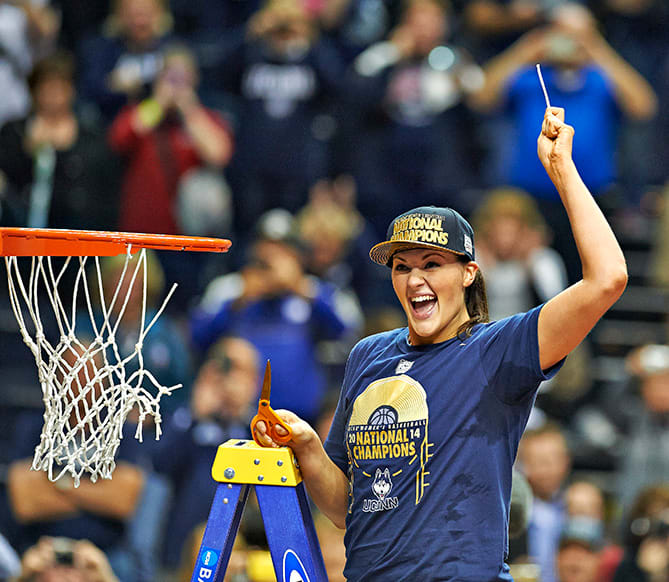
Stefanie Dolson (left) and the Connecticut Huskies just won the 2013--14 national title. Get out the ladders and the scissors, people. It's time to cut down the nets! This tradition began in basketball-mad Indiana at the state championship in the 1920s. It's an inclusive ritual during which each member of a program snips a piece of the net after winning a title. Most even do it after winning a regional during the NCAA tournament, though some teams get superstitious and wait for the bigger win.
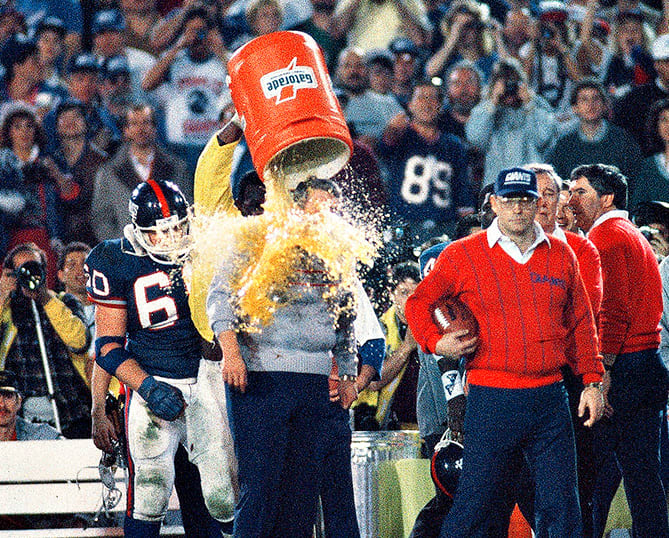
There are 10 seconds left on the clock. You see the players creep up behind their coach with a sly look on their faces. Then, splash! There goes the Gatorade. It's a tradition mostly practiced in football that originated back in 1984, when Chicago Bears Dan Hampton, Steve McMichael, and Mike Singletary teamed up to give coach Mike Ditka a bath in the waning moments of a division-clinching win over the Vikings. It wasn't repeated until the following October, when New York Giants defensive lineman Jim Burt orchestrated a dousing for his coach, Bill Parcells, after a win over the Washington Redskins. It was a way to celebrate, but Burt may have also been looking for a little payback. Parcells had tried to motivate Burt the week before by telling him that he had no chance against the Redskins' offensive line. The Gatorade dump turned into a good-natured tradition for the Giants and Parcells, with Burt and linebacker Harry Carson (right, dunking Parcells after the Giants beat the Broncos in Super Bowl XXI) doing most of the heavy lifting.
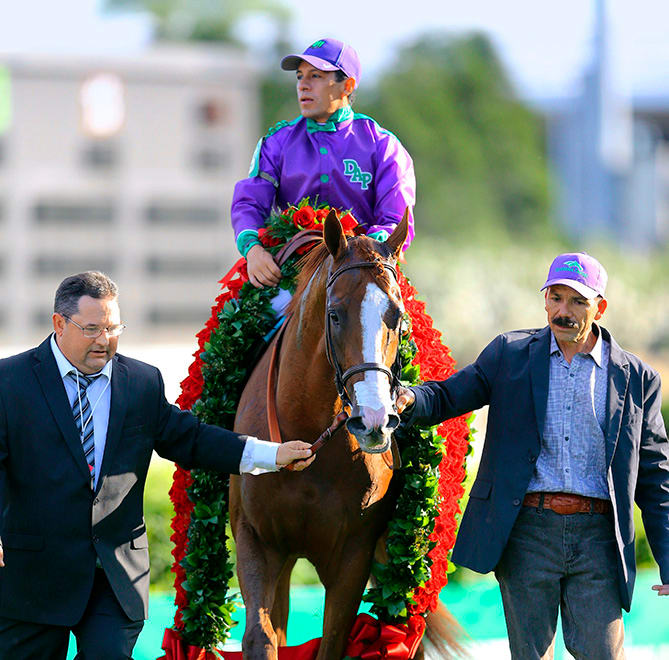
They would probably prefer sugar cubes and carrots, but the horses who win the Kentucky Derby receive a blanket of roses in the winner's circle. It's because of a party that happened all the way back in 1883. Supposedly, the president of Churchill Downs, the track where the Derby is held, became inspired at a postrace celebration at which roses were handed out to the ladies in attendance. The first blanket may not have been awarded until three years later, though. Today this Triple Crown race is called the Run for the Roses, and the blanket (above, on 2014 winner California Chrome) is made of 554 blooms!
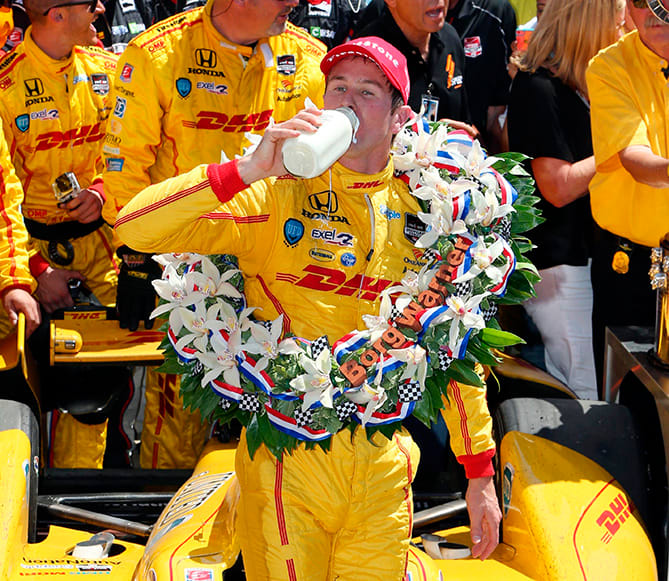
Driver Louis Meyer drank buttermilk to cool off when the weather was hot, and he happened to drink some in Victory Lane after winning his third Indy 500 in late May of 1936. A dairy executive saw a photo in the paper the next day and, thinking Meyer was swigging regular milk, was thrilled with the marketing possibilities. For each year after — except for a break between 1947 and '55 — milk has been offered to the winner of the 500. Ryan Hunter-Reay (right) kept the tradition going in 2014 courtesy of the American Dairy Association of Indiana, which provides a choice of whole milk, 2%, and fat-free.
